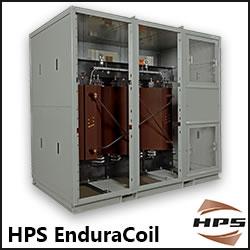AI in Energy: Powering the Transition to a Smarter, Greener Grid
Rising demand for renewable energy and advanced energy management systems is set to drive AI adoption in the energy market, though high initial costs may hinder growth.
The global AI in energy market is projected to reach $14.0 billion by 2029, growing at a CAGR of 17.2% from 2024 to 2029. This growth is fueled by the rising adoption of renewable energy, increasing grid complexity, and advancements in data analytics and AI technologies.
Artificial Intelligence (AI) is transforming the energy sector by optimizing production, distribution, and consumption. AI enables real-time monitoring, demand forecasting, and efficiency improvements, particularly in managing the variability of renewable sources like solar and wind.
Driving Forces Behind AI in Energy
The surge in renewable energy adoption—particularly solar and wind—is increasing the complexity of managing energy supply and demand. These sources are inherently variable, dependent on weather and time of day, making predictive analytics and real-time decision-making essential. This is where AI steps in.
By analyzing massive datasets from smart grids, weather models, and energy consumption patterns, AI enables:
• Accurate demand forecasting
• Efficient energy distribution
• Optimized storage and usage
• Reduced carbon emissions
According to the International Energy Agency (IEA), solar PV and wind are expected to account for 95% of global capacity expansion, making renewables the leading source of electricity by early 2025. AI plays a critical role in integrating these sources by analyzing weather patterns, energy consumption trends, and grid dynamics to predict demand and supply.
AI also enhances operational efficiency through innovations such as predictive maintenance in wind turbines and optimal panel positioning in solar farms. As energy storage becomes more vital, AI helps manage charging and discharging cycles, improving reliability and grid stability.
Despite its potential, the high cost of AI implementation—including infrastructure upgrades and skilled talent—remains a major barrier. However, emerging opportunities in carbon emission monitoring are creating new avenues for AI. Advanced algorithms can track emissions in real time, helping companies reduce their carbon footprint and meet sustainability goals.
Key players in the AI in energy market include Atos SE, Siemens Energy, Schneider Electric, GE Vernova, Terex Corporation, Vestas, Iberdrola, JinkoSolar, AutoGrid Systems, and Constellation.
As demand for clean energy grows, AI will play a pivotal role in shaping the future of the global energy landscape.
Featured Product

HPS EnduraCoilTM Cast Resin Medium Voltage Transformer
HPS EnduraCoil is a high-performance cast resin transformer designed for many demanding and diverse applications while minimizing both installation and maintenance costs. Coils are formed with mineral-filled epoxy, reinforced with fiberglass and cast to provide complete void-free resin impregnation throughout the entire insulation system. HPS EnduraCoil complies with the new NRCan 2019 and DOE 2016 efficiency regulations and is approved by both UL and CSA standards. It is also seismic qualified per IBC 2012/ASCE 7-10/CBC 2013. Cast resin transformers are self-extinguishing in the unlikely event of fire, environmentally friendly and offer greater resistance to short circuits. HPS also offers wide range of accessories for transformer protection and monitoring requirements.
